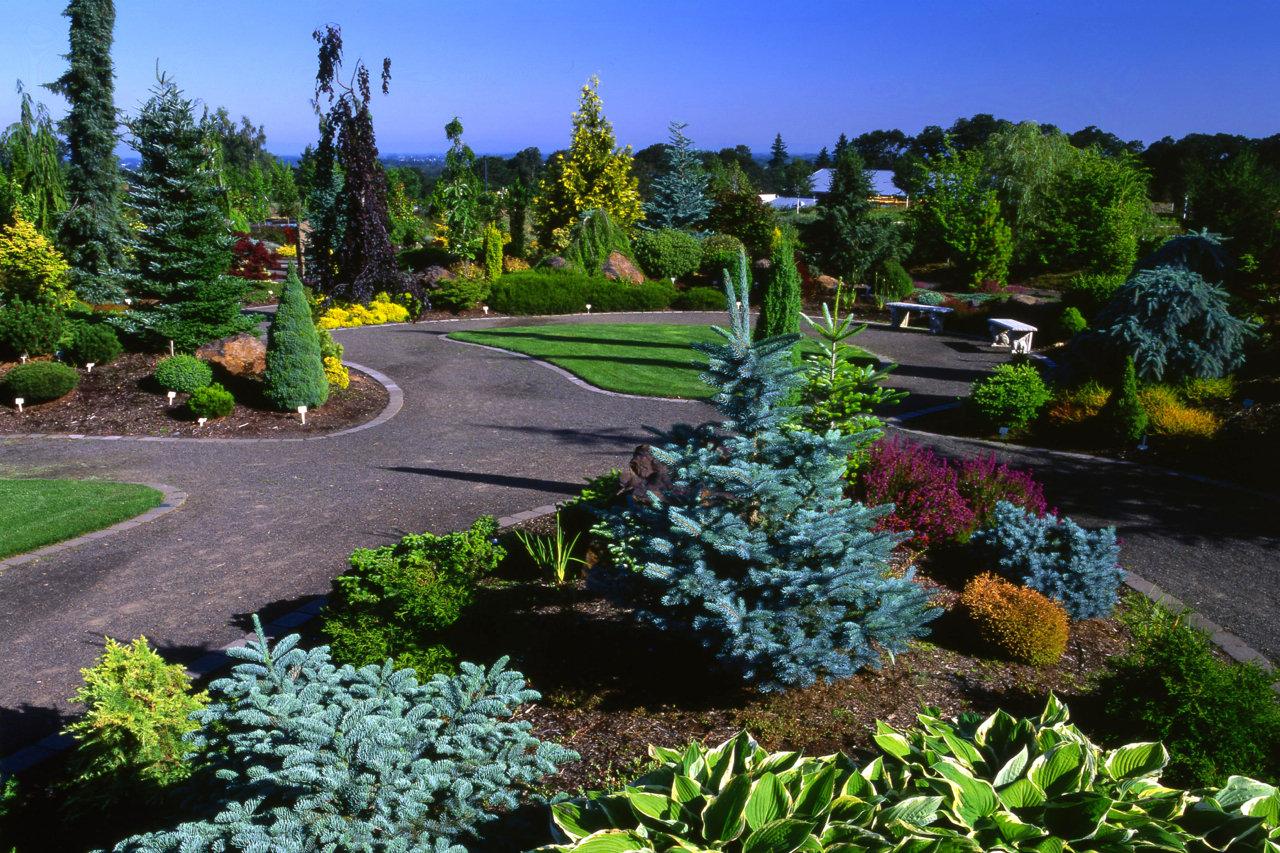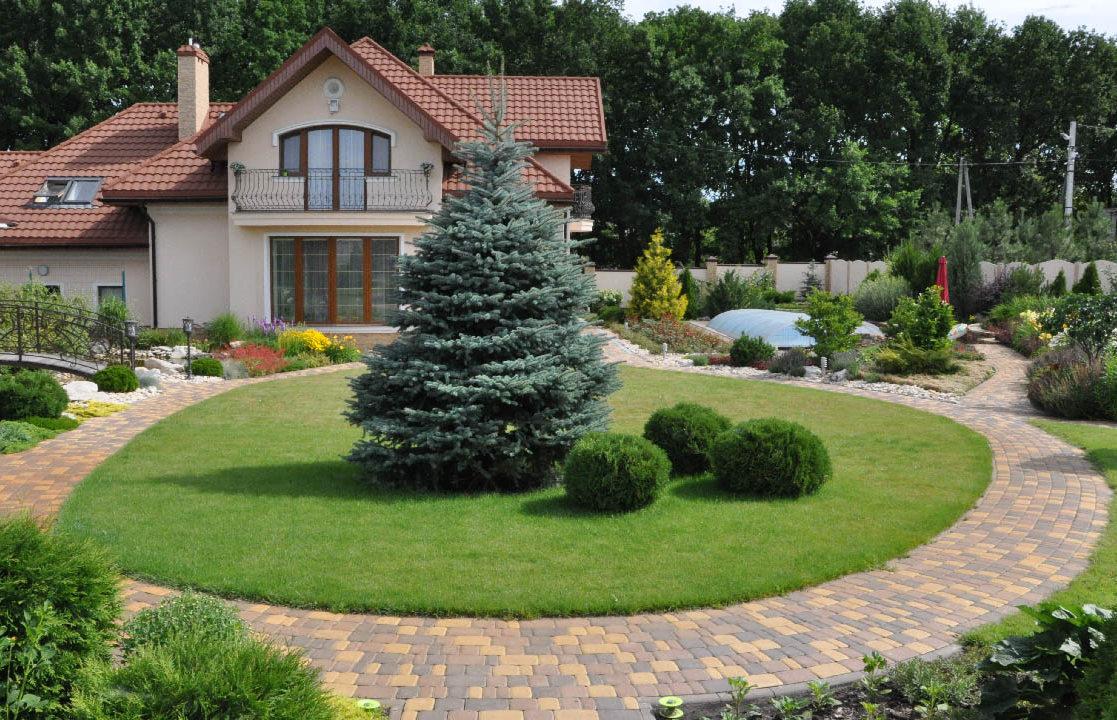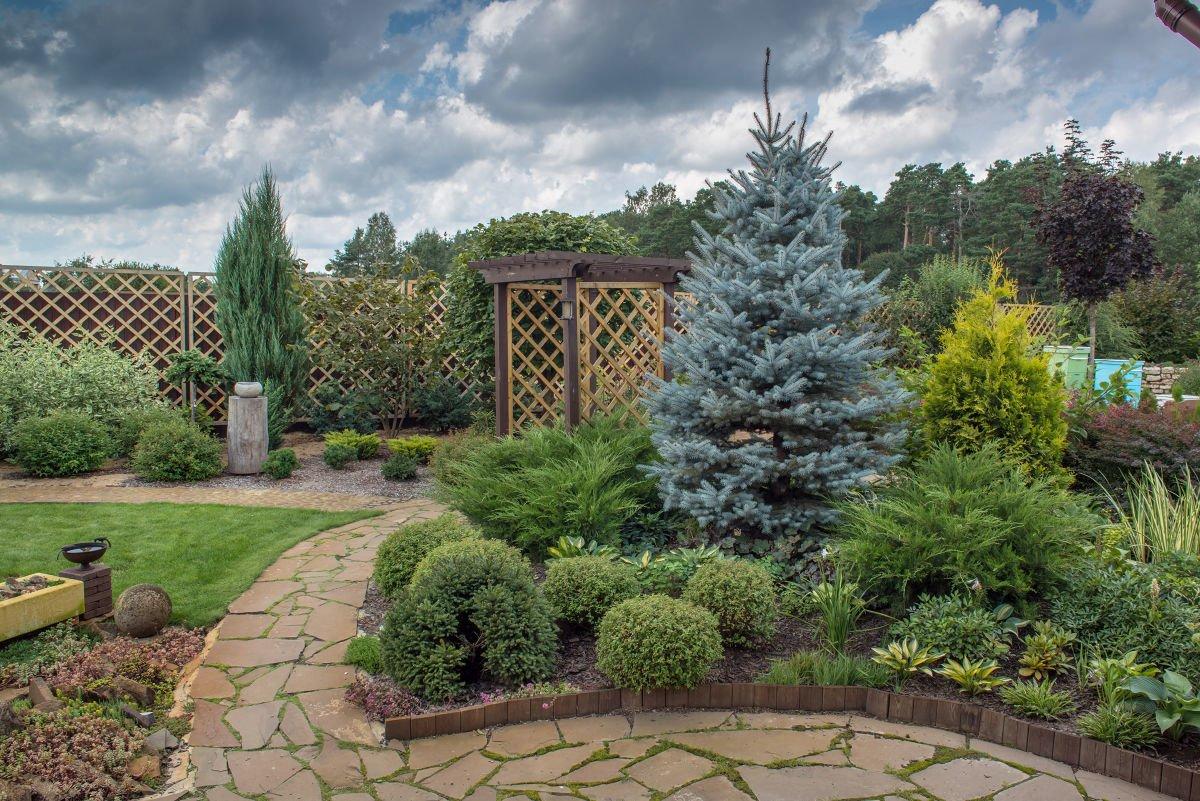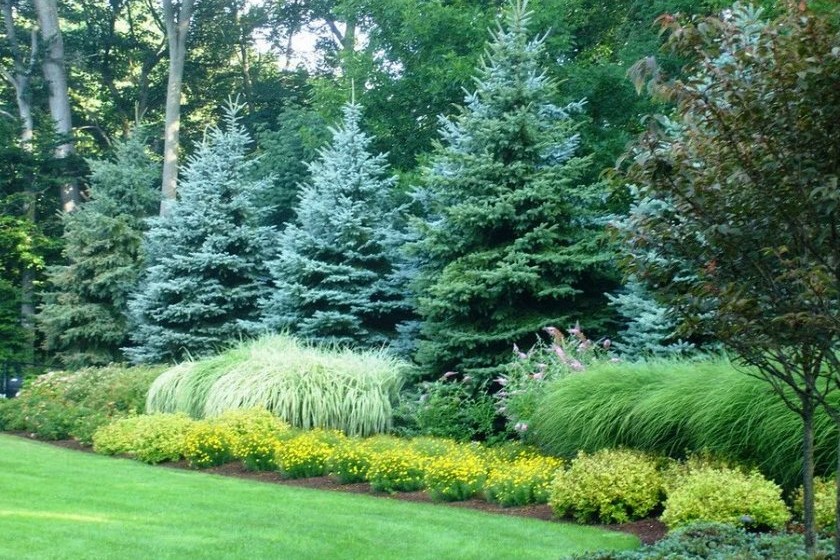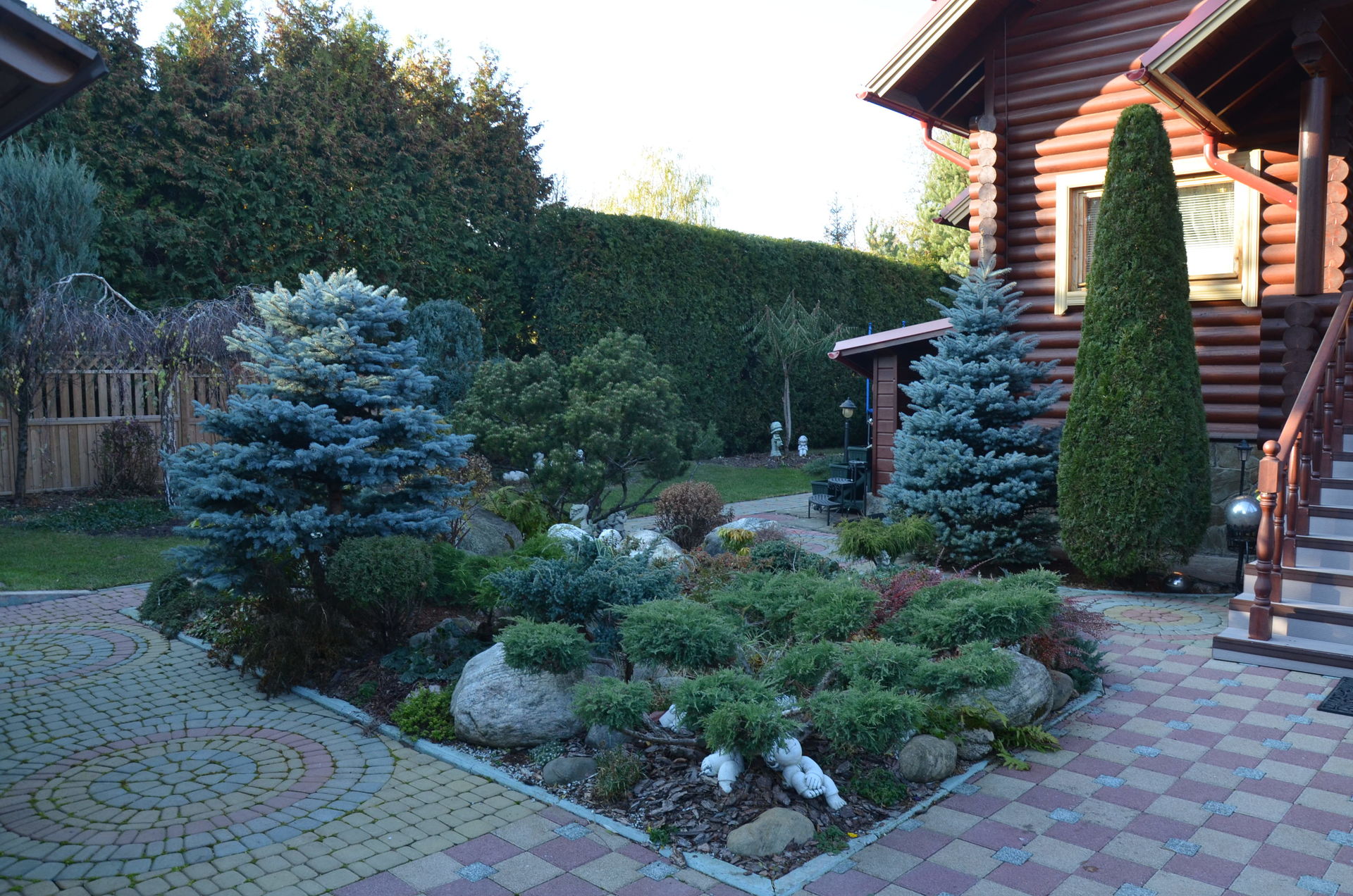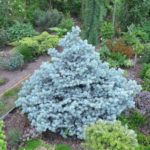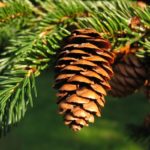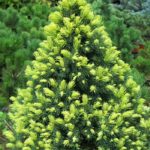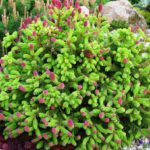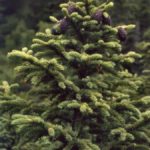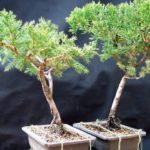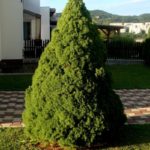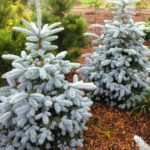Spruce trees are often used in landscape design. These plants can be used in a variety of ways - as a tapeworm, placed around the site in the form of a hedge, or created in compositions with other trees and shrubs. To get an effective and harmonious result, it is recommended to think through the structure of the ensemble in detail and correctly position all the elements on the site.
What varieties are used for decorative purposes?
Today there are more than 50 varieties of spruce.Most often, the following types of crops are used to decorate gardens and parks:
- Prickly - the most famous varieties from this category are Eric Flam, Koster, Fat Albert, Montgomery.
- Serbian - the most famous varieties of the crop include Pendula, Minima, Pimoko, Karelian.
- Canadian - popular varieties of this plant are Blue Wonder, Desis White, Piccolo.
- Ordinary - popular dwarf varieties include Konica, Nana, Repair. Among the tall crops, Columnaris and Inversa stand out.
Ready-made concepts
Coniferous plants are often used to decorate garden plots. At the same time, they must be grown according to the rules. Landscape designers offer many ready-made concepts to beginning gardeners.
Surrounded by stones (rock garden)
Decorative spruce trees harmonize perfectly with the stones on the site. They can be planted between them, which helps to create an original ensemble. Spruce also looks great in combination with a stone fence.
To create a composition with stones, you should give preference to certain varieties of dwarf spruce trees. These include Nidiformis and Push. The Serbian Karel spruce will look good.
Moreover, each variety is characterized by unique features:
- Nidiformis - characterized by a cushion-shaped crown. There is a recess in its central part. In this case, the needles are characterized by a bright green color and reach a length of 1 centimeter. By the age of 10, the crop grows to a maximum of 1 meter. Usually its size does not exceed 50 centimeters. In this case, the diameter of an adult plant is 1-2 meters.
- Push - this variety is characterized by a hemispherical crown and bright green needles. The culture is also distinguished by small cones of different shades. They come in red, pink or purple.By the age of 10, the Push spruce grows to a maximum of 30 centimeters. Moreover, its diameter reaches half a meter.
- Karelian – This variety of the Serbian variety is characterized by compact size and slow growth. By the age of 10, the plant reaches 75 centimeters in height and width. The culture is characterized by a spherical or cushion-shaped crown. It is distinguished by its green-blue color. The plant requires moderately moist soil. It grows well in both sun and partial shade.
Close to home
A combination of different meadow flowers planted in groups around a spruce will help create a unique landscape. It is also permissible to plant dwarf conifers in combination with bright flowers. Another spectacular option would be to place blue spruce next to cypress trees, thujas and bright red flowers.
When planting blue spruce, it is important to consider that it is an evergreen coniferous plant that reaches a height of 25-30 meters. It is distinguished by beautiful needles measuring 15-30 millimeters, which are painted in various shades of blue. Initially, the tree was grown only in the USA, but gradually varieties appeared for cultivation in different countries of the world.
In rock gardens
It is permissible to combine spruce with other conifers. They look great with pine trees and thujas. An equally successful combination is obtained with larch. To set off such a composition, it is worth planting purple or white flowers nearby in groups.
Near the gazebos
Coniferous trees look great near gazebos. When creating such compositions, it is recommended to combine spruce with decorative deciduous shrubs or flowers.Such ensembles look very expressive and have not lost their relevance for many years.
To create such compositions, it is worth using fairly large trees. They should match the height of the gazebo or even be slightly higher. This will make the ensemble more harmonious and provide additional shade in the heat.
The most suitable varieties that can be planted near gazebos include Pendula. This tree looks very original and is often used to decorate the garden.
Spruce by the pond
If there is a pond on the site, it is permissible to supplement it with a stone frame and place several Glauk fir trees around it. Such plants reach a height of 2.5 meters by the age of 10 years. The tree is characterized by a high-density conical crown and hard, needle-like needles, which are distinguished by their silver-blue color. Glauka spruce is often used in landscape design. This is due to its undemanding nature when it comes to growing conditions.
Such conifers can be combined with perennial herbaceous plants and variegated flowers. At the same time, it is not recommended to place thujas near the spruce. Also, fruit trees and berry bushes would not be a very good solution. Such plants are simply incompatible.
Along the path
To decorate garden paths, the decorative Konica spruce is perfect. This plant has a beautiful cone-shaped crown. In fact, it is a dwarf form of the gray Canadian variety. This plant does not exceed 1 meter in height. The culture is characterized by thin and short needles of bluish-green shades. It is worth considering that it goes well with other conifers and flowers of different shades.
Along the fence
To decorate the space along the fence, you should use the Belobok variety. It has a very original appearance. A distinctive feature of the culture is considered to be rather slow growth. In 10 years the plant reaches a height of 2 meters. Moreover, its diameter is 1 meter. The culture is distinguished by a dense crown and shiny dark green needles. Young growths have a rich, creamy hue for several weeks.
It is worth considering that Belobok spruce can be used not only for decorating areas near fences. They fit well into the space of any garden plot. This could be a rock garden, an area near a pond, a garden path or a rock garden.
Combinations
Spruce trees are often combined with other ornamental plants to create all sorts of compositions.
Spruce trees with contrasting needles
The ordinary variety can be safely combined with the Hoopsie variety. This crop is distinguished by a very bright blue hue of its needles. At the same time, young needles are distinguished by a light blue color, and the tree itself looks silver. By the age of 10, the plant reaches 5 meters, and by 30 - 10. The diameter of an adult crop is 4 meters.
For ate Hoopsies and the ordinary variety are characterized by crowns of different shades that combine beautifully with each other. This ensemble will complement any area of the garden. However, it is best to place it along the paths that lead to the house.
Dwarf and tall spruce trees
To create an unusual composition on your site, you should give preference to the Inversa variety, which is distinguished by a weeping crown. This culture looks very unusual. The shoots of the plant hang down strongly, and the lower branches literally lie on the ground. Inversion can reach a height of 6-8 meters.At the same time, an adult tree has a diameter of 2-2.5 meters and glossy dark green needles.
To create an attractive composition, the Inverse variety can be combined with any crops. To obtain contrast, it is worth placing some kind of dwarf spruce nearby.
Spruce and juniper
The Tompa variety is ideal for combination with juniper. It grows slowly and takes up minimal space on the site. The height of this crop does not exceed 1.5-2 meters. By the age of 10, the plant reaches only 40-60 centimeters. This tree is characterized by a wide conical crown and short bright green needles, which change color under the influence of seasonal factors.
Spruce is a versatile coniferous plant that fits perfectly into a wide variety of garden compositions. In order for the crop to grow and develop well, it is important to choose the right variety of ephedra and provide it with complete and high-quality care.

